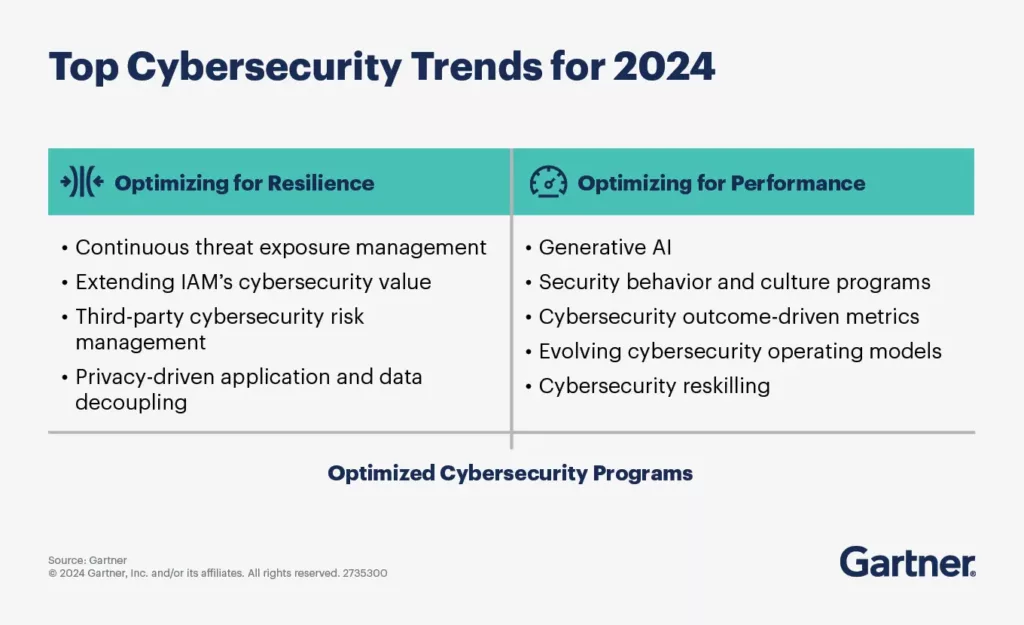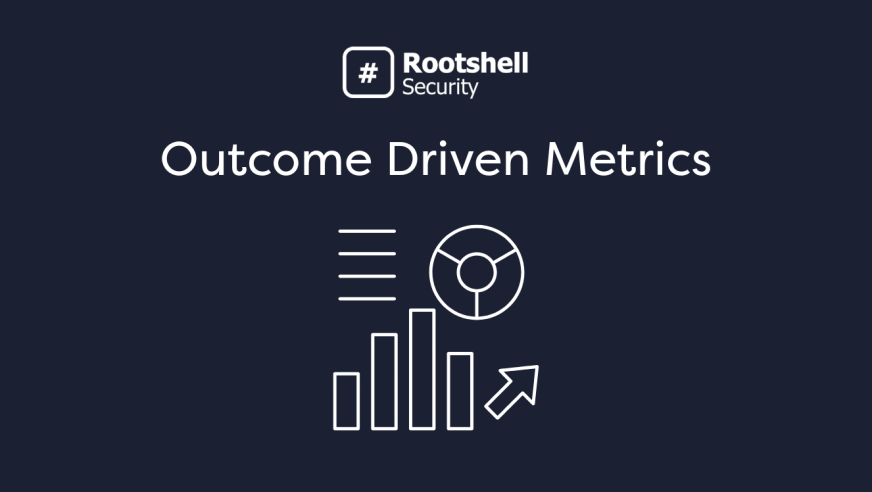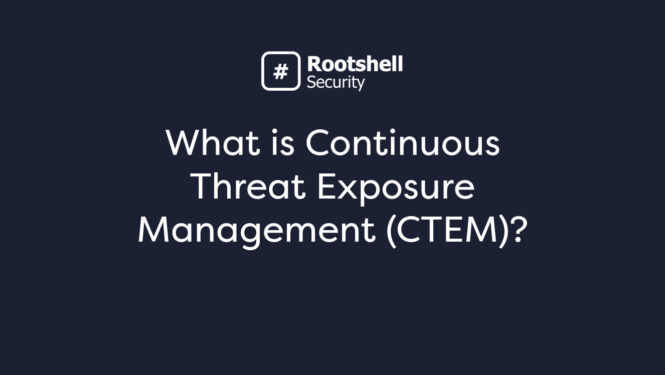Outcome-driven metrics are more than just a trendy term in the business world. They are a crucial tool for effective performance management, providing visibility and transparency into the true impact of an organization’s initiatives and strategies.
In the past, organizations often focused on measuring activities rather than results. But in today’s competitive landscape, this approach is no longer sufficient. You need to measure the outcomes of your efforts, not just the inputs.
Outcome-driven metrics provide an objective assessment of the performance, success, or failure of a specific project or program. They are based on the principles of transparency, goal clarity, and continuous improvement—all essential attributes for driving business value and accurately assessing performance.

The Necessity of Outcome-Driven Metrics for Cybersecurity
The cybersecurity landscape changes rapidly with evolving threats. Measuring the success of security measures through traditional activity-based metrics is increasingly proving inadequate.
Outcome-driven metrics, on the other hand, are proving indispensable. They shift the focus from merely tracking security activities to evaluating their effectiveness in achieving strategic objectives.
This approach enhances performance management and offers clear visibility into the impact of your business’s cybersecurity initiatives, helping to justify investments and optimize resource allocation.
Outcome-driven metrics allow you to evaluate how well your measures protect against threats, comply with regulations, and support overall business goals. These metrics are critical for demonstrating the return on investment in cybersecurity and for making informed decisions about where to focus future efforts.
Understanding Outcome-Driven Metrics in Cybersecurity
Outcome-driven metrics are essential in cybersecurity for measuring the tangible results that reflect the true efficacy of security measures.
This approach ensures that metrics are not just numbers but are meaningful indicators of how your security efforts contribute directly to organizational goals.
Here are some outcome-driven metrics that can be used in cybersecurity:
MTTD
Mean time to detect measures the average time it takes for your organization to notice a security breach or threat. A shorter MTTD indicates a more effective and responsive cybersecurity monitoring system.
MTTR
This measures the average time it takes to act once a security incident is detected, hence the name—mean time to respond. A faster MTTR is critical for minimizing the potential damage from breaches and ensuring rapid recovery and remediation.
Incident Response Success Rate
If you assess the percentage of security incidents that were successfully managed and resolved and compare it to the total number of incidents, you get the incident response success rate. High success rates indicate effective incident response strategies and capabilities.
Reduction in the Number of Incidents
Tracking the change in the number of security incidents over time can illustrate the effectiveness of security enhancements and risk management strategies.
Vulnerability Closure Time
This metric tracks the time it takes to close vulnerabilities after they are identified. Faster closure times indicate a more proactive and efficient vulnerability management process.
Patch Management Effectiveness
Patches are used to shore up any vulnerabilities that existed in previous versions. Patch management effectiveness measures the percentage of your critical systems that are up-to-date with the latest security patches. This metric is crucial for maintaining the security integrity of systems and protecting against known vulnerabilities.
Compliance Rate
Certain industries have to comply with cybersecurity regulations. This metric measures the degree to which the organization meets required security standards. High compliance rates indicate a strong alignment with industry best practices and regulatory requirements.
Security Training and Awareness Metrics
Threat vectors aren’t always technological; your employees can also be used to breach your organization’s cyber defenses. This metric evaluates the effectiveness of security training programs by measuring changes in employee behavior or the number of security incidents attributable to human error. Improvements in these metrics can demonstrate the value of training and awareness initiatives.
Cost of Security Operations
Does your business spend more on cybersecurity than is warranted? The cost of security operations metric monitors the expenditure on cybersecurity efforts relative to the budget. This metric helps evaluate the financial efficiency of the security operations and can guide budget adjustments and resource allocation.
UBA
User behavior analytics tracks anomalies in user behavior that might indicate potential security threats. Effective UBA can lead to early detection of insider threats or compromised credentials.
Implementing and Practicing ODMs in Business Operations
Successfully implementing outcome-driven metrics in cybersecurity or any other sector involves a strategic blend of planning and practical application. These metrics not only assess but also effectively drive the desired business outcomes.
Key Practices for Implementation:
- Establish Clear Standards: Define precise performance benchmarks that serve as the baseline for assessing the efficacy and progress of your initiatives. Clear targets help quantify success in tangible terms and make it easier to communicate results across the organization.
- Customization to Specific Needs: Adapt metrics to the specific requirements of individual projects or organizational objectives. This ensures that each metric is highly relevant and fully aligned with the targeted outcomes, enhancing the accuracy and relevance of performance assessments.
- Comprehensive Impact Assessment: Develop a detailed understanding of the real impact of actions and strategies. This involves looking beyond superficial metrics to evaluate deeper implications, such as long-term effects on security posture or business continuity.
- Influence on Decision-Making: Leverage objective data from these metrics to shift executive discussions from subjective viewpoints to evidence-based decision-making. This can significantly enhance strategic planning and resource allocation.
- Alignment with Key Performance Indicators: Ensure that outcome-driven metrics align with broader business KPIs. This alignment helps integrate specific security efforts or project objectives with the company’s overall strategy, reinforcing cohesion and synergy across departments.
- Tracking and Monitoring: Implement robust tracking and regular monitoring of these metrics to maintain oversight and enable timely adjustments. Continuous monitoring supports proactive management and ensures that strategies remain effective under changing conditions.

Steps to Put Outcome-Driven Metrics into Practice:
Define Outcomes:
Start by clearly defining success for the initiative or project. Understanding the desired outcomes is critical for developing metrics that accurately measure effectiveness and progress towards these goals.
Set Goals:
Establish achievable goals and benchmarks that stem directly from the defined outcomes. This setting provides a clear roadmap for success and facilitates progress tracking, making it easier to identify when course corrections are needed.
Set Metrics:
Choose metrics that are directly measurable and closely linked to the defined outcomes. These should be indicators that can clearly demonstrate progress, effectiveness, and areas needing improvement.
Monitor:
Consistently track these metrics to assess the effectiveness of strategies and initiatives over time. Regular monitoring measures success and identifies areas for improvement. It drives continual advancement and adaptation.
By integrating these strategic and practical elements, you can fully leverage outcome-driven metrics to enhance performance and align operations with strategic business goals.
Leveraging Outcome-Driven Metrics for Enhanced Cybersecurity
To fully leverage outcome-driven metrics, cybersecurity leaders must ensure continuous improvement and alignment with business strategies:
- Continuous Monitoring and Analysis: Implement systems and processes for ongoing monitoring of defined metrics to quickly identify and respond to discrepancies, vulnerabilities, or failures.
- Integration with TBM Tools: Use Technology Business Management tools to track cybersecurity investments’ financial and operational aspects. This helps you understand the cost versus benefit and optimize spending on security measures.
- Effective Stakeholder Communication: Keep stakeholders informed about the status and effectiveness of cybersecurity measures. Regular updates help maintain transparency, build trust, and ensure continued support from executive leadership and other key stakeholders.
Driving Organizational Performance With Rootshell
Outcome-driven metrics transform how you oversee and assess cybersecurity efficiency. It makes you focus on the real impacts of security activities. That way, you can ensure that your cybersecurity strategies defend against immediate threats and align with long-term business objectives.
This approach provides a framework for sustained improvement. It helps you adapt to the dynamic cybersecurity landscape and secure your digital assets more effectively.
Partnering with a proven security expert like Rootshell Security can further enhance your security posture. We offer a comprehensive range of cybersecurity solutions tailored to meet your specific needs, from penetration testing and managed security services to bespoke consultancy.
Discover how Rootshell Security can help you implement robust, outcome-driven security measures that protect your critical assets and support your business goals.



